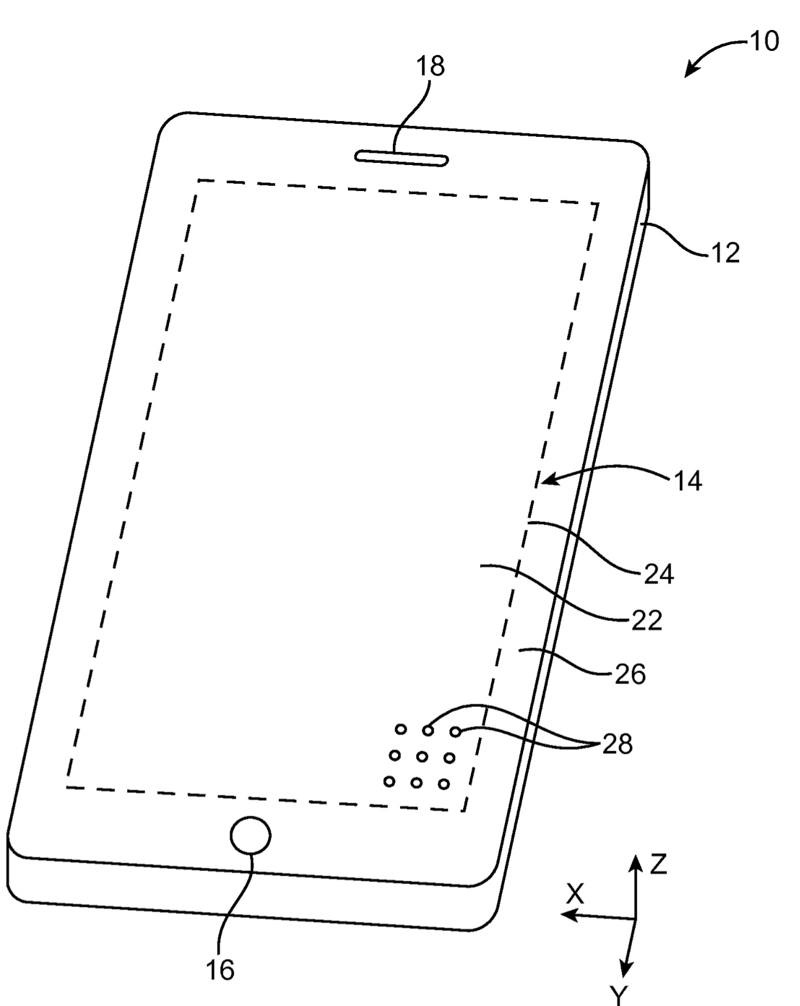Apple has been granted a patent (number 9,543,364” for “Electronic devices having displays with openings” that hints at upcoming iPhones and iPads will edge-to-edge displays. Per the patent, a display may occupy the entire front face of a device. The invention might also allow for major speaker changes.

Here’s the patent summary: “The display may have an active region in which display pixels are used to display images. The display may have one or more openings and may be mounted in a housing associated with the electronic device. An electronic component may be mounted in alignment with the openings in the display. The electronic component may include a camera, a light sensor, a light-based proximity sensor, status indicator lights, a light-based touch sensor array, a secondary display that has display pixels that may be viewed through the openings, antenna structures, a speaker, a microphone, or other acoustic, electromagnetic, or light-based component. One or more openings in the display may form a window through which a user of the device may view an external object. Display pixels in the window region may be used in forming a heads-up display.”
The method described would allow an iPhone or iPad with a true edge-to-edge display. It might also allow microphones and speakers to be built “into” the display itself. The patent says a microphone may receive acoustic signals through the openings and that sound from a speaker may be emitted through the openings.
And even though Apple has (apparently) given up building its own standalone displays, future iMacs with a bezel-less screen with a built-in speaker, microphone and camera is an intriguing idea.
Apple has also been granted patents for its Time Machine back-up interface (patent number 9,542,423), its Smart Keyboard for the iPad Pro (patent D776,116), its Smart Case for the iPad (patent D776,122), and more.
Of course, Apple files for — and is granted — lots of patents by the U.S. Patent & Trademark Office. Many are for inventions that never see the light of day. However, you never can tell which ones will materialize in a real product.

